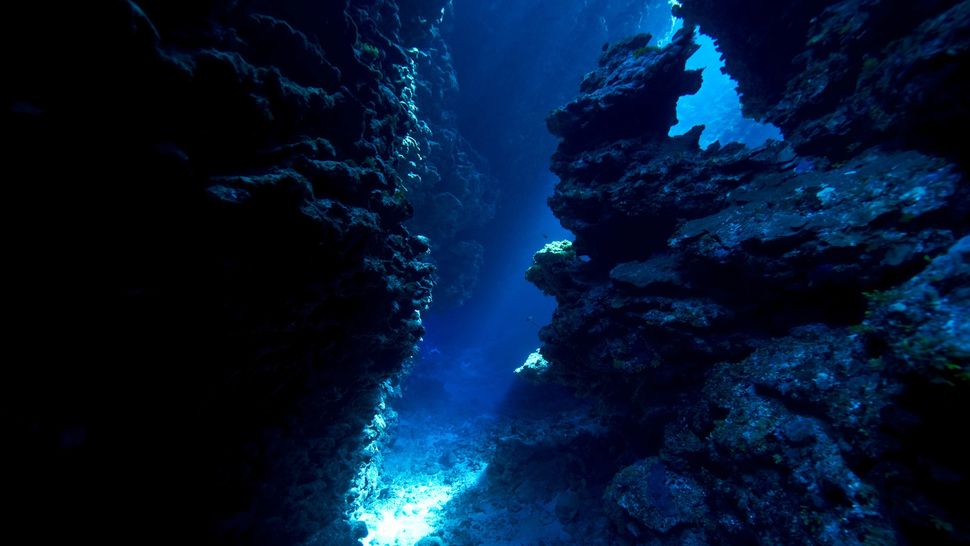Colossal underwater canyon discovered near seamount deep in the Mediterranean Sea
By Sascha Pare published about 5 hours ago
Researchers have discovered a 33,000-foot-wide (10 kilometers) underwater canyon that was carved out of the Mediterranean seabed shortly before the sea dried up around 6 million years ago.

An underwater cave leading to a canyon.
A newly discovered underwater canyon was carved out of the seabed by extremely salty currents. (Image credit: Jason Edwards via Getty Images)
Scientists have discovered a giant underwater canyon in the eastern Mediterranean Sea that likely formed just before the sea transformed to a mile-high salt field.
The canyon formed around 6 million years ago, at the onset of the Messinian salinity crisis (MSC), when the Gibraltar gateway between the Atlantic Ocean and Mediterranean Sea narrowed and eventually pinched shut due to shifts in tectonic plates. The Mediterranean Sea became isolated from the world's oceans and dried up for roughly 700,000 years, leaving behind a vast expanse of salt up to 2 miles (3 kilometers) thick in some places.
As sea levels dropped, increasingly salty currents eroded the seabed and incised gullies several hundred feet deep along the steepest edges of the Mediterranean Sea. In a study published in the January issue of the journal Global and Planetary Change, researchers now describe a giant U-shaped canyon located 75 miles (120 km) south of Cyprus, in the depths of the Mediterranean's Levant Basin.
The 1,640-foot-deep (500 meters) and 33,000-foot-wide (10 km) canyon, which the researchers named after the nearby Eratosthenes seamount, likely formed underwater shortly before salt piled onto the seabed. Unlike the more coastal gullies, the canyon had no older "pre-salt" roots, according to the study.
More:
https://www.livescience.com/planet-earth/rivers-oceans/colossal-underwater-canyon-discovered-near-seamount-deep-in-the-mediterranean-sea
